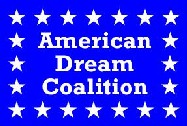
 |
|
|
Evaluating Rail Transit ProposalsBefore any rail lines are constructed using federal funds, the federal government requires transit agencies to prepare detailed analyses of the benefits and costs of those lines. While transit agencies and other rail supporters do their best to promote the benefits while downplaying the costs, a careful review of these reports will usually reveal that the benefits are tiny or non-existent.Most evaluations of rail projects include several alternatives including, at minimum, a do-nothing alternative, a bus improvements alternative (sometimes called "TDM" for transportation demand management), and the rail proposal. In most cases, the documents indicate that the rail alternative will cost far more than the bus alternative, yet carry few additional passengers. The best measure of this is the "cost per new rider." As directed by the Federal Transit Administration's cost-effectiveness formula (scroll down to 3.4.2, "Incremental Cost per Incremental Passenger"), this is calculated by:
Use the same process to compare the improved bus alternative with the no-action alternative. The results will usually show that the cost per new rider of making bus improvements is around $2 to $5, while the cost per new rider of building rail lines is $10 to $20 or more. The Federal Transit Administration once had a policy of providing discretionary funding only to projects whose cost per new rider was less than $6. Madison, Wisconsin is considering a proposal to build and operate commuter rail lines. The city hired Parsons Brinkerhoff, a well-known transportation consultant, to evaluate the proposal. Parsons Brinkerhoff found that bus service in the region could be improved for a cost of about $60 million. Building the commuter rail lines, which would only serve a small portion of the region, would cost around $180 million. To serve the rest of the region, planners assumed the rail proposal would be accompanied by bus improvements for a total cost of $240 million. Parsons' original analysis found that the bus improvements alone would actually carry more riders than the bus improvements with two new commuter rail lines. An alternative with four commuter rail lines carried a few more passenger than the bus alternative at a cost of more than $140 per new ride. So it modified the bus alternative by deleting supposedly unproductive bus routes. The result was that the rail alternative was predicted to carry 1.6 percent more riders than the improved bus alternative. Cost Per New Ride of Madison Commuter Rail All numbers in millions (except cost per ride) Alternative No Build Enhanced Bus Commuter Rail Annual trips 12.4 18.5 18.8 Capital cost $20.0 $60.3 $242.0 Annual cap cost 1.4 4.3 17.2 Operating cost 31.7 36.2 39.5 Total annual cost 33.1 40.5 56.7 New annual cost 7.4 16.2 New rides 6.1 0.3 Cost per new ride 1.21 54.00 Capital costs amortized at 5 percent over twenty-five years. The cost per new rider of bus improvements was just $1.21, around half of which would probably be covered by transit fares. But the cost per new rider of the rail lines would be $54. This would vary slightly depending on the interest rate and amortization period, but it would be outrageously high no matter what the assumptions. In publicity for the rail line, rail proponents simply deleted any mention of the enhanced bus alternative. This made it appear that rails were crucial to getting a 50-percent ridership increase. If anyone had calculated the cost per new rider of the rail alternative relative to the no-build alternative, it would have appeared to be a modest $3.69. But this disguised the fact that 95 percent of the new riders would be gained by low-cost bus improvements, not the expensive rail lines. |